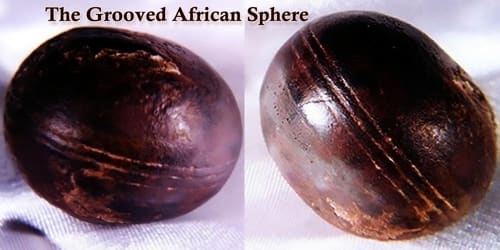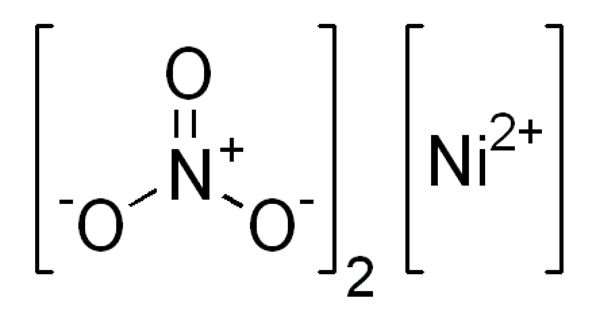Climate change led to a global decline in northern hemisphere temperatures about 13,000 years ago. The Mediterranean region experienced severe aridity during this period of extreme cold, known as the Younger Dryas, which had a significant influence on both terrestrial and marine ecosystems. But what do we know about the impact of this climate change on water circulation in the Mediterranean?
During the Younger Dryas, the flow of water masses from the eastern Mediterranean to the Atlantic Ocean through the Strait of Gibraltar doubled, according to a study published in Nature’s Communications Earth & Environment journal. Neodymium (Nd) isotopes, a novel technology, have been used in this study to reconstruct the Mediterranean region’s circumstances since the last deglaciation, which occurred about 14,000 years ago.
The study is part of the doctoral thesis being carried out by Sergio Trias-Navarro, under the supervision of Professor Leopoldo Pena and Professor Isabel Cacho, from the consolidated research group in Marine Geosciences (GCR Marine Geosciences) of the Faculty of Earth Sciences of the University of Barcelona.
The study presents some of the most relevant results of the European Research Council’s TIMED project (ERC-Consolidator), and has an outstanding participation of members of the GCR Marine Geosciences, and experts from La Sapienza University of Rome, the University of Palermo (Italy), and the Swiss Federal Institute of Technology in Zurich (Switzerland).
The most intense climate change in 13,000 years
The Younger Dryas was both the most severe and planetary-scale climate shift in the last 13,000 years. The Holocene, the interglacial epoch in which we now live, came to an end when it did.
The Younger Dryas is not a perfect analogue for future changes, as we are currently facing a much more amplified greenhouse effect. Still, our study reveals that the change in aridity which is expected by the end of the century is capable of inducing an intensification of the Mediterranean circulation, although the projected warming could counteract this effect. For this reason, we need to better understand the relative weight that these two variables temperature and humidity have had on the evolution of the Mediterranean circulation.
The research team
“There has also been climate variability during the Holocene, such as the episodes known as the Little Ice Age, the Medieval Climatic Anomaly or the Roman Warm Period. However, this climate variability had a lower relative intensity with different regional climatic expressions, without the capacity to generate changes on a global scale,” says Professor Isabel Cacho, from the UB Department of Earth and Ocean Dynamics.
The last sapropel, a Holocene episode following the Younger Dryas associated with an unprecedented rise in rainfall in the Mediterranean region, particularly in North Africa, is also examined in the research.
The study offers the first quantitative assessment of the alterations in the deep circulation of the eastern Mediterranean during this phase, and it was estimated that it was decreased by up to a quarter compared to the Younger Dryas. The scientists point out that it is uncertain what effect this incident may have had on the North Atlantic’s oceanography.
The new research backs up the idea that, during the Younger Dryas, increased salt input from the Mediterranean into Atlantic waters was essential for reactivating the North Atlantic circulation, which in turn caused a rapid warming of Europe and the Mediterranean to usher in the Holocene.
“Mediterranean water masses are one of the primary sources of salt in the North Atlantic. Water salinity is an important factor in oceanography, as it determines the density of water masses. It is therefore a key process in the formation of deep waters in the Atlantic Ocean and is the driver of global ocean circulation,” says researcher Sergio Trias-Navarro.
A technical innovation to study the oceans of the past
The team has utilized the ground-breaking method of neodymium radiogenic isotopes as geochemical tracers to recreate the oceanic conditions of the past, as it has in prior investigations carried out by the GRC Marine Geosciences.
This analytical study has been carried out in the LIRA and PANTHALASSA laboratories, unique research support facilities in Catalonia located in areas of the Faculty of Earth Sciences and the UB’s Scientific and Technological Centres (CCiTUB) and coordinated by experts Leopoldo Pena and Isabel Cacho.
“Compared to other types of geochemical tracers, Nd isotopes have the great advantage of being conservative. Therefore, they do not interact with or are not affected by biological processes, for example, biological productivity or the degradation of organic matter,” says Professor Leopoldo Pena, co-author of the paper.
“This technique allows us to go beyond time and it can be applied to oceanographic reconstructions of both the present and the past. It allows us to understand the dynamics of the ocean and reconstruct oceanography long before we could observe or measure it ourselves with other scientific tools,” adds the expert.
Younger Dryas: a mirror for the Mediterranean of the future?
The potential influence of Mediterranean waters on the North Atlantic circulation is still shrouded in mystery. Despite the scientific interest, “much of the oceanographic studies focusing on the Atlantic Ocean do not consider the Mediterranean, and perhaps the role of Mediterranean waters in the Atlantic circulation has been downplayed,” note the authors.
The Younger Dryas is used as an example of the foreseeable changes in rainfall that will occur in the Mediterranean as a result of an anticipated decrease in the circulation of the North Atlantic in the most recent report of the Intergovernmental Panel on Climate Change (IPCC).
“On the other hand, according to projections for the end of the 21st century, the Mediterranean circulation will weaken and, consequently, so will its contribution to the Atlantic Ocean,” says Isabel Cacho, coordinator of the TIMED project.
Studies like this one are increasingly required in the current climate change environment to comprehend the susceptibility of the Mediterranean circulation to various climatic scenarios.
“The Younger Dryas is not a perfect analogue for future changes, as we are currently facing a much more amplified greenhouse effect. Still, our study reveals that the change in aridity which is expected by the end of the century is capable of inducing an intensification of the Mediterranean circulation, although the projected warming could counteract this effect. For this reason, we need to better understand the relative weight that these two variables temperature and humidity have had on the evolution of the Mediterranean circulation,” concludes the research team.
















